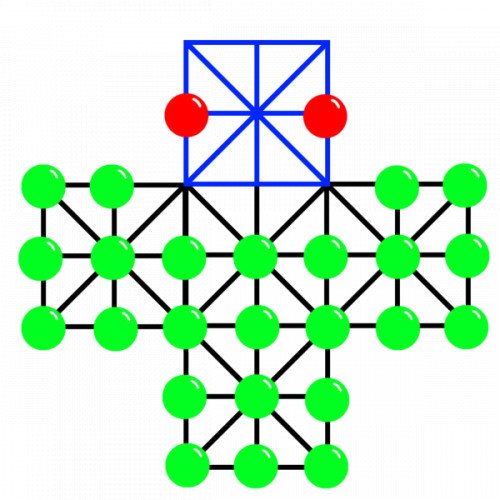ASALTO VS SHOGI

ASALTO
Asalto, also known as the Assault Game, German Tactics or Officers and Sepoys, is a board game for two players in which one player, playing as the officers, attempts to defend a fortress from their opponent's invading rebels. The game is a variant on the Fox and Geese theme, and is commonly played in Germany, France, and England. Asalto is an asymmetric game in which the players take on two very different roles: the rebels and the officers. The rebels' objective is to capture the two officers, surround them so that they cannot move, or occupy all of the points within the "fortress". The officers' objective is to capture enough rebels that these tasks become impossible. Asalto is played on a grid of 33 intersection points in the shape of a cross, with a specially denoted arm known as the fortress at the top of the board. The total number of pieces in an Asalto game is 26, composed of 24 rebels and two officers. Before play begins, the rebels are arranged so that they sit on the 24 intersection points outside the fortress, while the officers may be arranged at the player's discretion inside the fortress. The game begins once the rebel player takes the first turn.
Statistics for this Xoptio

SHOGI
Shogi (将棋, shōgi, English: /ˈʃoʊɡiː/, Japanese: , also known as Japanese chess or the Game of Generals, is a two-player strategy board game that is the Japanese variant of chess. It is the most popular chess variant in Japan. Shōgi means general's (shō 将) board game (gi 棋). Shogi was the earliest chess variant to allow captured pieces to be returned to the board by the capturing player. This drop rule is speculated to have been invented in the 15th century and possibly connected to the practice of 15th century mercenaries switching loyalties when captured instead of being killed. The earliest predecessor of the game, chaturanga, originated in India in the 6th century, and the game was likely transmitted to Japan via China or Korea sometime after the Nara period. Shogi in its present form was played as early as the 16th century, while a direct ancestor without the drop rule was recorded from 1210 in a historical document Nichūreki, which is an edited copy of Shōchūreki and Kaichūreki from the late Heian period (c. 1120). Two players face each other across a board composed of rectangles in a grid of 9 ranks (rows, 段) by 9 files (columns, 筋) yielding an 81 square board. In Japanese they are called Sente 先手 (first player) and Gote 後手 (second player), but in English are conventionally referred to as Black and White, with Black the first player. The board is nearly always rectangular, and the rectangles are undifferentiated by marking or color. Pairs of dots mark the players' promotion zones.